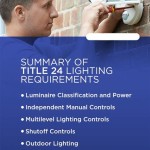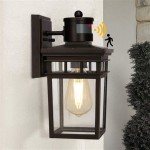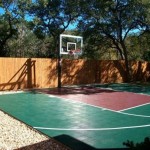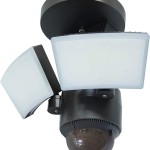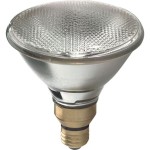Smart Timers for Outdoor Lights: Enhancing Security, Convenience, and Energy Efficiency
Outdoor lighting plays a vital role in enhancing home security, increasing curb appeal, and providing safe passage during nighttime hours. Traditional timers offer a degree of automation, but smart timers elevate outdoor lighting control to a new level of convenience, security, and energy efficiency. This article explores the benefits, features, and considerations for selecting and using smart timers for outdoor lights.
Benefits of Smart Timers for Outdoor Lights
Smart timers offer numerous advantages over traditional mechanical or digital timers. They provide greater flexibility, remote control options, and integration with other smart home devices.
*
Enhanced security:
Smart timers can create the illusion of occupancy even when the home is vacant, deterring potential intruders. Randomized lighting schedules further enhance this security feature. *Increased convenience:
No more manual adjustments or fumbling with dials. Control outdoor lighting from anywhere using a smartphone or tablet. *Improved energy efficiency:
Automated schedules ensure lights are only on when needed, reducing energy consumption and lowering electricity bills. *Integration with smart home ecosystems:
Seamless integration with other smart home devices allows for coordinated lighting scenes and automated routines. *Geolocation features:
Lights can automatically turn on when approaching home and off when leaving, providing added convenience and security. *Voice control:
Compatibility with voice assistants like Amazon Alexa and Google Assistant enables hands-free control of outdoor lighting.Types of Smart Timers for Outdoor Lights
Several types of smart timers are available, each with its own set of features and capabilities. Choosing the right type depends on specific needs and preferences.
*
Smart plugs:
These plug-in timers connect to an existing outdoor outlet and control any device plugged into them. They are a simple and affordable way to add smart functionality to existing outdoor lights. *In-wall smart switches:
These replace traditional wall switches and offer direct control over wired outdoor lighting fixtures. They typically require professional installation. *Smart modules:
These devices install behind existing light switches, allowing users to retain the existing switch while adding smart control functionality. *Smart bulbs:
These bulbs have built-in Wi-Fi or other smart technology, eliminating the need for separate timers. They offer individual control over each bulb and often include features like color changing and dimming.Key Features to Consider When Choosing a Smart Timer
When selecting a smart timer, consider the following factors to ensure compatibility and functionality.
*
Connectivity:
Choose a timer that uses a reliable wireless protocol like Wi-Fi, Z-Wave, or Zigbee. Ensure compatibility with the existing home network. *Weather resistance:
Outdoor timers must withstand exposure to the elements. Look for timers with appropriate weatherproof ratings. *App functionality:
The smartphone app should be user-friendly and offer intuitive control over scheduling, automation, and other features. *Scheduling flexibility:
The timer should allow for creating complex schedules based on time of day, sunrise/sunset, or other triggers. *Compatibility with smart home platforms:
Ensure compatibility with preferred smart home platforms like Apple HomeKit, Amazon Alexa, or Google Assistant. *Power capacity:
Verify that the timer can handle the wattage of the connected outdoor lights.Installation and Setup of Smart Timers
Installation procedures vary depending on the type of smart timer. Smart plugs are the easiest to install, simply plugging into an existing outdoor outlet. In-wall switches and modules require electrical wiring and may necessitate professional installation. Smart bulbs are installed like regular bulbs, but require connection to the home Wi-Fi network.
*
Follow manufacturer instructions carefully:
Always consult the manufacturer's instructions for specific installation guidelines. *Ensure proper grounding:
For hardwired timers, ensure proper grounding to prevent electrical hazards. *Test functionality:
After installation, thoroughly test the timer and connected lights to ensure proper operation.Security Considerations for Smart Timers
While smart timers enhance security, it is crucial to address potential vulnerabilities.
*
Secure Wi-Fi network:
Use a strong password and enable network encryption to protect the smart timer from unauthorized access. *Regular firmware updates:
Keep the timer's firmware updated to patch security vulnerabilities and ensure optimal performance. *Two-factor authentication:
Enable two-factor authentication for added security on the associated smart home app.Using Smart Timers for Energy Efficiency
Smart timers offer significant potential for reducing energy consumption related to outdoor lighting.
*
Optimize lighting schedules:
Use schedules that align with actual lighting needs, minimizing unnecessary operation. *Utilize motion sensors:
Integrating motion sensors with smart timers further reduces energy waste by only activating lights when motion is detected. *Consider dimming features:
Smart bulbs with dimming capabilities allow for adjusting light levels, further conserving energy.Troubleshooting Common Issues with Smart Timers
Occasionally, smart timers may encounter issues. Here are a few common problems and troubleshooting tips:
*
Connectivity problems:
Check Wi-Fi signal strength and ensure the timer is within range of the router. Reset the timer or router if necessary. *Scheduling errors:
Verify the accuracy of programmed schedules and ensure the timer is set to the correct time zone. *App malfunctions:
Check for app updates or reinstall the app. Contact the manufacturer's support if issues persist. *Power outages:
Some smart timers may require reprogramming after a power outage. Consider models with battery backup to retain settings.
Mytouchsmart Simple Set Plug In Dual Digital Indoor Outdoor Timer With 2 Grounded S 26898 P2 The Home Depot

Mytouchsmart Simple Set Indoor Outdoor 2 Wireless Timer System 35167 The Home Depot

Mytouchsmart Simple Set Plug In Dual Digital Indoor Outdoor Timer With 2 Grounded S 26898 P2 The Home Depot

Here S Our Guide To The Best Automated Smart Light Timer Digital Trends

The 3 Best Smart Outdoor Lights For Backyards Of 2024 Reviews By Wirecutter

Bn Link Smart Wifi Heavy Duty Outdoor Timer And Countdown Function No Hub Required For Lights Compatible With Alexa Google Assistant 2 4 Ghz Network Only Com

Outdoor Timers Appliance Timer Controls Switches Light Switch Energy Circle

Mytouchsmart 15 Amps 125 Volt Simple Set Outdoor Digital Timer 2 Plug In Countdown Lighting The Timers Department At Com

How To Put Outdoor Lights On A Timer Electronicshub

Bn Link Smart Wifi Heavy Duty Outdoor Timer And Countdown Function No Hub Required For Lights Compatible With Alexa Google Assistant 2 4 Ghz Network Only Com
Related Posts


